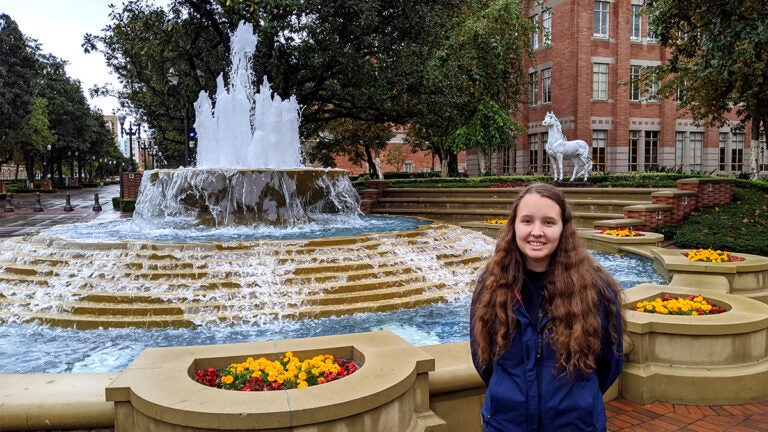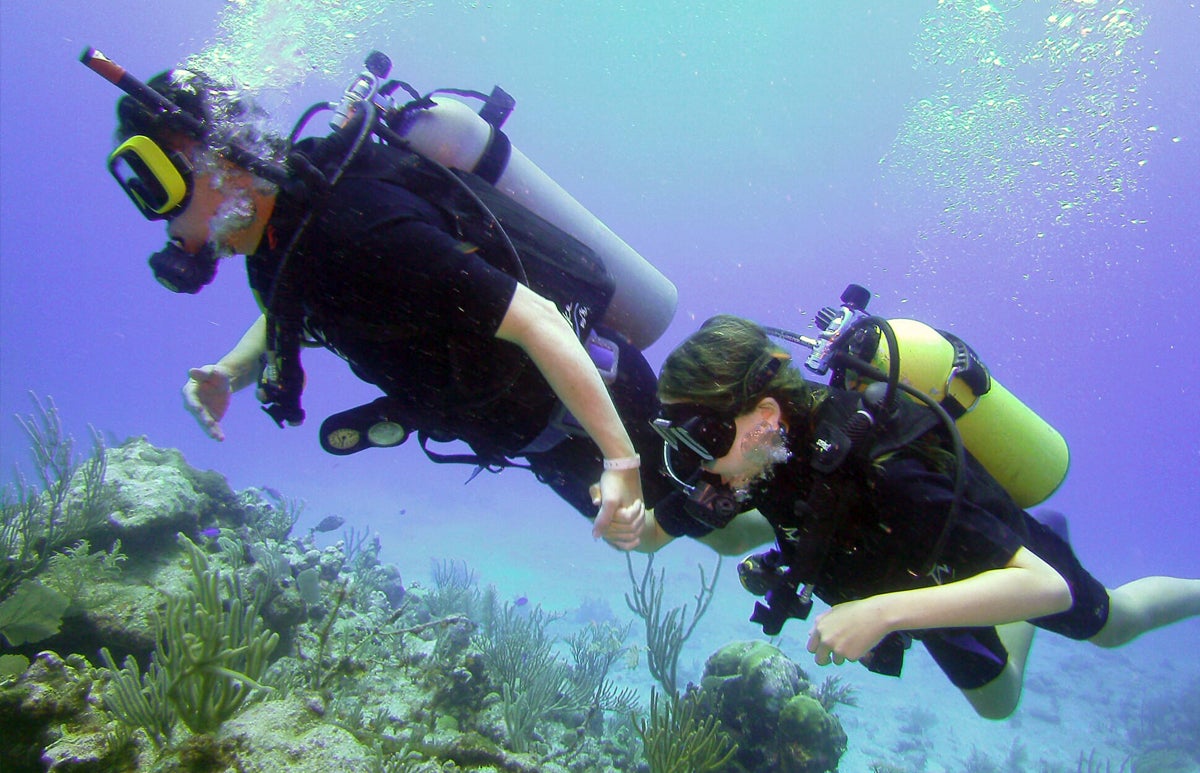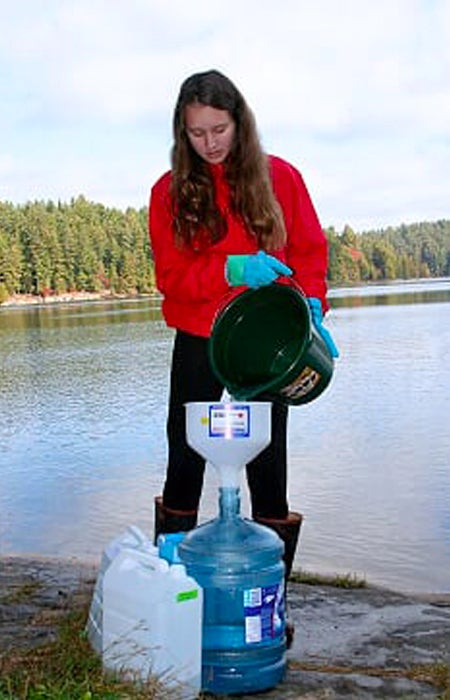
Shells could save our seas, says USC Dornsife undergraduate
Inspiration struck USC Dornsife sophomore Isabella O’Brien at age 11, during a family vacation in 2009 to the beaches of Akumal, Mexico. A guided dive took them through Gonzalo’s Reef, alive with small, swift fish darting through a network of vibrant coral. For a girl who hailed from landlocked Ontario, Canada, this shimmering underwater world was sheer magic.
But, something felt amiss. Although much of the coral was brightly colored, large swaths had turned a chalky white. “They seemed to guide you away from the dead areas,” O’Brien remembers of the divers conducting the tour. Later that day, she stumbled upon an educational center where she learned that much of the coral was dying due to ocean acidification.
Since 1985, the Mesoamerican Reef system that winds through Mexico’s Gulf Coast has lost nearly half of its reef-building coral to white band disease. Although exact causes of the plague remain unclear, scientists speculate that it’s exacerbated by warming ocean waters and acidification caused by climate change.
O’Brien was shocked: “How could people have let this happen?”
Basement lab beginnings

Back home in Canada, she was determined to do something to help. She read up on ocean acidification and discovered a connection to calcium. Acidification reduces the number of calcium ions in ocean water. Without these ions, organisms struggle to produce and maintain their shells.
O’Brien looked up the content of mollusk shells and discovered it was almost 98% calcium, depending on the individual species. She also read that millions of tons of shells were tossed into landfills from the seafood industry each year. Perhaps adding the calcium from these discarded shells back into the ocean would help with acidification, O’Brien thought. This idea became her seventh-grade science fair project.
To prove her theory, she needed a lab. Her parent’s basement became her work bench and household kitchen supplies her equipment.
“I got oyster, clam and mussel shells from the local seafood market. I cleaned, sterilized and dried them, then I pulverized them using a coffee bean grinder,” she explains. Without access to the ocean, she simulated seawater — carefully mixing salt, water and vinegar to create the same salinity and pH levels — in mason jars.
The experiment was a success. “After three months of testing, my results clearly showed a decrease in the rate of shell degradation and a stabilization, even an increase, in pH levels,” says O’Brien.
Her science fair project — titled “Trouble in Paradise: Can Shell Recycling Help Buffer the Effects of Ocean Acidification?” — made her a top 20 finalist for the 2015 Google Science Fair, in which thousands of students from around the world competed for prizes.
Save the fleas

Without easy access to the ocean, she switched to more local waters for her next project. Acid rain in the 1970s and ’80s had lowered pH levels in lakes near her home, causing calcium to leach from the water. This put the water flea Daphnia pulex, a tiny crustacean that keeps algae populations in check, at particular risk.
O’Brien collected samples from Plastic Lake in Ontario and tried another set of experiments. She added pulverized shell to the lake water along with juvenile water fleas to gauge if increased calcium levels could aid in their reproduction. It did.
“The calcium level, survivability and reproduction improved in all treatments with shell powder,” says O’Brien. “This could protect lake biodiversity, help mitigate algal blooms and address the global issue of shell waste disposal.”
More awards came her way. She snagged a gold medal and the Environmental Challenge Award at the 2016 Canada-Wide Science Fair.
Political future
Now a political science major at USC Dornsife, O’Brien is turning her eye to how government policy can make a dent in climate change.
“One of our biggest problems is that we can’t communicate effectively what our problems are; just talking about ‘parts per million’ doesn’t make people care,” she explains.
She got an inside look at United States politics through the USC Dornsife Center for the Political Future.
“I went with [the center] to Sacramento for a political summit. We toured legislature, got to know everything about politics in California and met so many interesting people,” she recounts.
Back home in Canada for the fall semester, she’ll continue her USC Dornsife courses online while also working as a research assistant with Vox Pox labs, which is using data science to improve political representation and democratic participation. In 2021, she’ll embark with the organization Students on Ice on an Artic expedition. She’s still not sure quite what her future holds beyond that, but whatever unfolds for O’Brien, environmental advocacy will remain a guiding force.
“There’s always so much going on, but climate change is the biggest issue that we face. If we destroy our planet then the human race is gone and there’s nothing we can fix.”